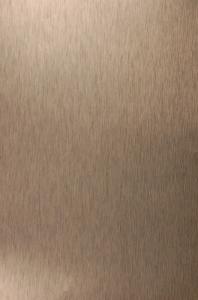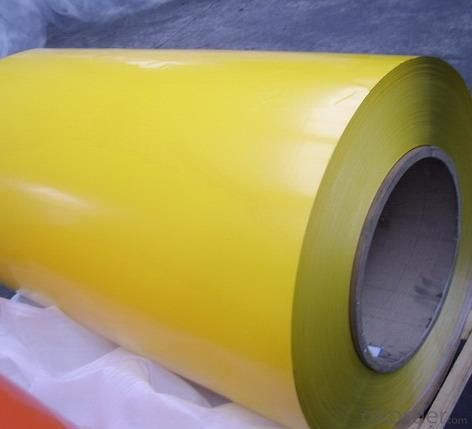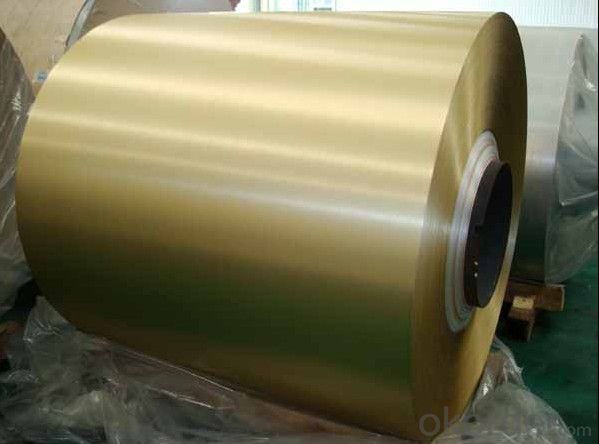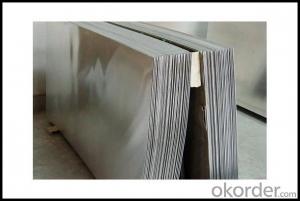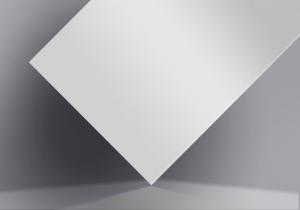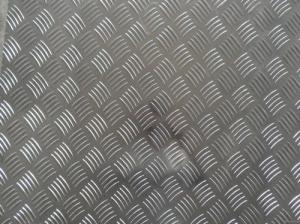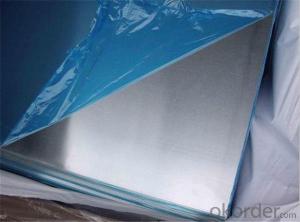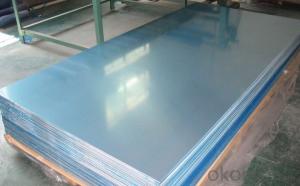Dark Bronze Anodized Aluminum Sheets - Coated Aluminium Sheets According to RAL No. from China
- Loading Port:
- Shanghai
- Payment Terms:
- TT or LC
- Min Order Qty:
- 5 m²
- Supply Capability:
- 9000 m²/month
OKorder Service Pledge
OKorder Financial Service
You Might Also Like
CNBM colour coated aluminium sheet
Colored aluminum foil rolls are widely applied to aluminum ceiling, roofing, fireproof roller shutter, doors, wall panel , facade cladding, etc.
1. Specification for coated aluminum coils
01)Material: aluminum alloy A1100, A3003, A3005, A3105
02)Aluminum thickness:0.20-1.20mm
03)Max coil width: 1600mm(standard 12 40mm)
04)Coil's standard diameter:1200mm, Interior diameter: 405mm,505mm, etc.
05) weight: 0.5-3.0T/coil or by buyer's option
06) Surface treatment: PE or PVDF coating
07) Color: solid, metallic, glossy, matte, wooden grain, marble stone,etc.
08) Dried and baked: oven baked at 450 degree F
09) Coating thickness: PVDF-25 micron, PE-18 micron
10) Coating hardness: (pencil hardness) HB
11) Coating adhesive: no lower than first grade
12) Impact resistance: no cracking and peeling(50kg/cm, ASTMD-2794:1993)
13)Flexibility(T-bend):2T or by your option
14) MEK resistance: more than 100
15)Outer packing: wooden plate, covering with craft paper and film, Eye to Sky or wall to Sky packing.

2. Applications
Interior applications:wall cladding, ceilings, bathrooms, kitchens and balconies, shutters, doors...
Exterior applications: wall cladding, facades, roofing, canopies, tunnels,column covers , renovations...
Advertisement and market applications: display platforms, signboards, fascia, shop fronts...

Packaging & Delivery
| Packaging Details: | Covering the coil with craft paper and films, and packed with wooden pallets. |
| Delivery Detail: | 10-15 days after getting deposit |
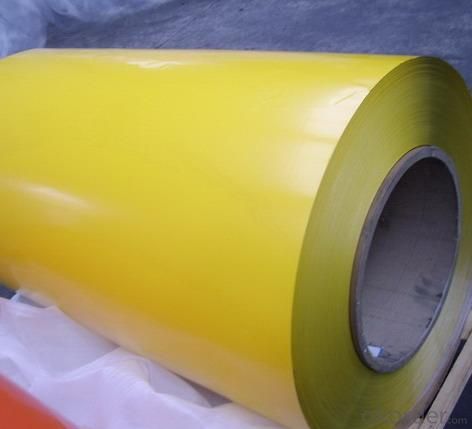
- Q: I have to wire solar DC photovoltaic panels and have always used at least an 8 gauge wire. Recently, I installed a solar electric fence and they recommended special electric fence wire that can handle 10,000 volts. It looks aluminum. The fence techs told me copper is only rated for 600 volts. And the power will leak through the insulation. They also say copper will corrode and created insulated spots. Does this mean that aluminum doesn't corrode and is it superior to copper? Is is all a lobbying scam to force us to buy copper? Can I use the electric fence wire in my solar wiring?
- The fence tech advise is wrong. Copper can withstand still higher voltage and there is no limitation at all. The limitation of sustainable voltage only depends on the thickness of insulation and its dielectric strength. perhaps, the fence tech told you that that particular wire israted for 600 V, it may be true. The use of copper and aluminium depends on your economy only and the atmosphere to which it is exposed. normally in both copper and aluminium hanged in atmosphere (fence application) both are inert to atmosphere, both creates a oxide layer which inhibits further corrossion. In some high power wiring the power loss in aluminium wire become perhaps significant comparred to the economy. So you will have to use copper. One advantaeg of coper is, it can be drawn to fine wire and so more releable if used as stranded wire. But aluminium is difficcult to draw into fine wires and if used as solid, more prone to break. (This is applicable to copper also.)
- Q: This aluminum is on a mobile home. I trying to repaint it and there is alot of areas were rust has ate the metal away. Especially in the seams. How can I get rid of the rust that already exists and stop it from coming back.
- Uh......... aluminum doesn't rust. Has to be some iron in there somewhere.
- Q: Do 101 aluminum sheets have any specific insulation properties?
- No, 101 aluminum sheets do not have any specific insulation properties. Aluminum is a good conductor of heat and electricity, which means it does not provide insulation against heat or cold. However, aluminum sheets can be used as a reflective surface to reflect heat or light. To provide insulation, additional materials such as foam or fiberglass can be added along with the aluminum sheets.
- Q: Can aluminum sheets be used for decorative or architectural purposes?
- Yes, aluminum sheets can be used for decorative or architectural purposes. Due to their lightweight, durability, and versatility, aluminum sheets are commonly used in architectural design and construction for applications such as cladding, roofing, facades, and decorative elements. They offer various finishes, patterns, and colors, making them suitable for enhancing the aesthetic appeal of both interior and exterior spaces. Additionally, aluminum sheets are resistant to corrosion and require minimal maintenance, making them a popular choice for decorative and architectural purposes.
- Q: Aluminium magnesium alloy plate, 5052 aluminium plate, 5005 aluminium plate. 5252 aluminum plate performance and use
- Electronic cabinet material and LED LCD TV backlight board
- Q: Is it possible to utilize aluminum sheets as materials for car body panels?
- <p>Yes, aluminum sheets can be used for car body panels. They offer several advantages such as lightweight, high strength, and good corrosion resistance. Aluminum is also easily recyclable and can be shaped into complex designs. However, aluminum is less resistant to dents compared to steel, which is a common material for car body panels. Despite this, aluminum's benefits often outweigh its drawbacks, making it a popular choice in the automotive industry, especially for high-performance and electric vehicles where weight reduction is crucial.</p>
- Q: Can aluminum sheets be anodized with custom designs?
- Indeed, custom designs can be incorporated into aluminum sheets through anodization. Anodization, an electrochemical procedure, fortifies the inherent oxide layer on aluminum surfaces, rendering them sturdier and more resistant to corrosion. Throughout this process, diverse patterns and designs can be introduced onto the aluminum sheet by masking specific areas and exposing others to the anodizing solution. This grants the opportunity for personalized designs to be etched or dyed onto the surface, resulting in distinctive and individualized finishes. Anodized aluminum sheets with custom designs find widespread application across various industries, including architecture, automotive, and electronics, in order to fulfill both aesthetic and functional prerequisites.
- Q: Can aluminum sheets be used for food display cases?
- Indeed, aluminum sheets are suitable for food display cases. Owing to their remarkable strength, durability, and resistance to corrosion, aluminum is widely favored for such purposes. Furthermore, the lightweight nature of aluminum facilitates the handling and transportation of these display cases. The clean and sleek look of aluminum also enhances the presentation of food items, making it an ideal material for showcasing a variety of foods. Additionally, aluminum is non-toxic and does not interact with food, guaranteeing the safety and hygiene of the displayed items. Ultimately, aluminum sheets are a suitable and pragmatic option for constructing food display cases.
- Q: Are 101 aluminum sheets suitable for agricultural machinery?
- Yes, 101 aluminum sheets are suitable for agricultural machinery.
- Q: Are aluminum sheets suitable for high-temperature applications?
- No, aluminum sheets are not suitable for high-temperature applications as they have a low melting point and tend to lose their strength and become deformed at high temperatures.
Send your message to us
Dark Bronze Anodized Aluminum Sheets - Coated Aluminium Sheets According to RAL No. from China
- Loading Port:
- Shanghai
- Payment Terms:
- TT or LC
- Min Order Qty:
- 5 m²
- Supply Capability:
- 9000 m²/month
OKorder Service Pledge
OKorder Financial Service
Similar products
Hot products
Hot Searches
Related keywords
